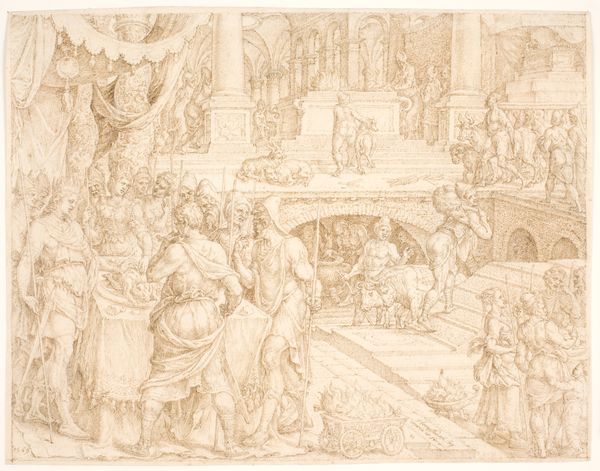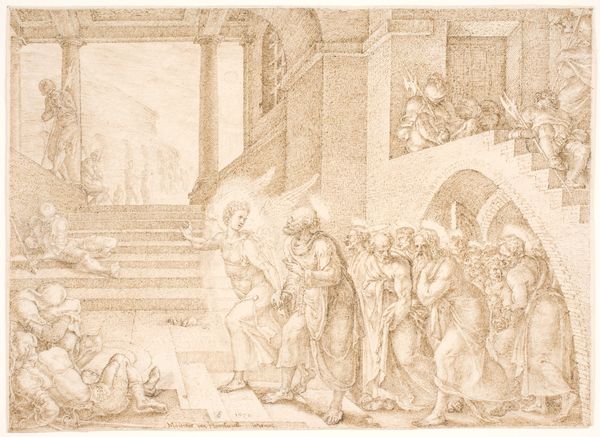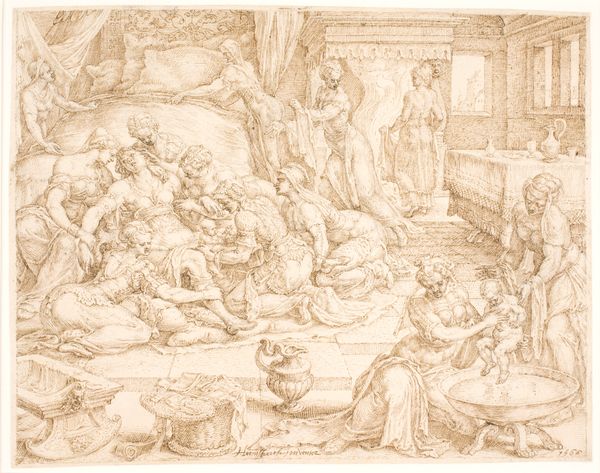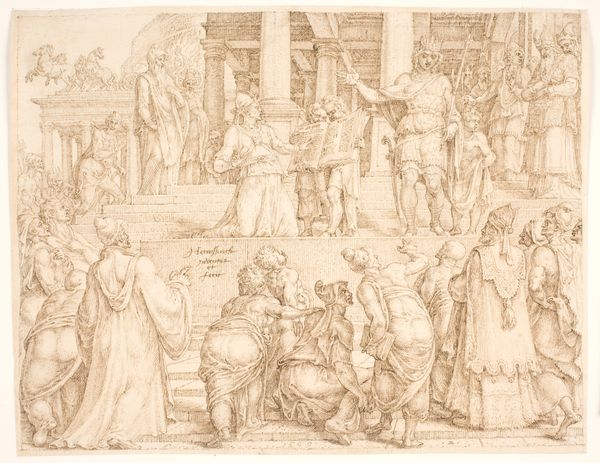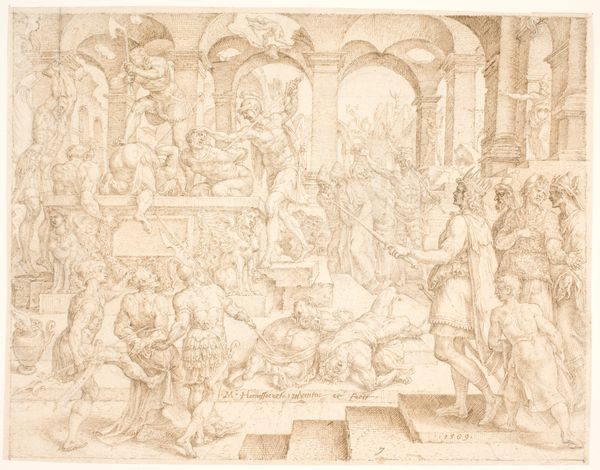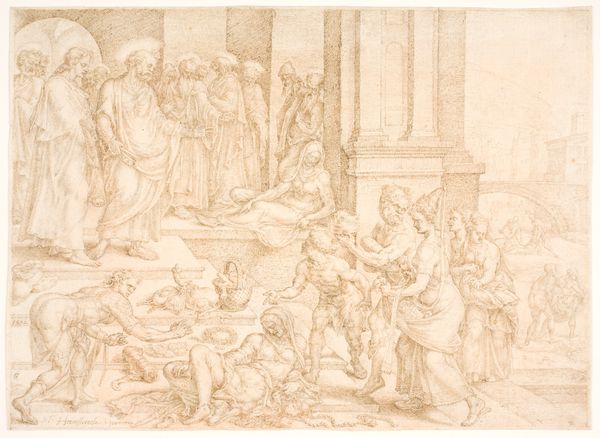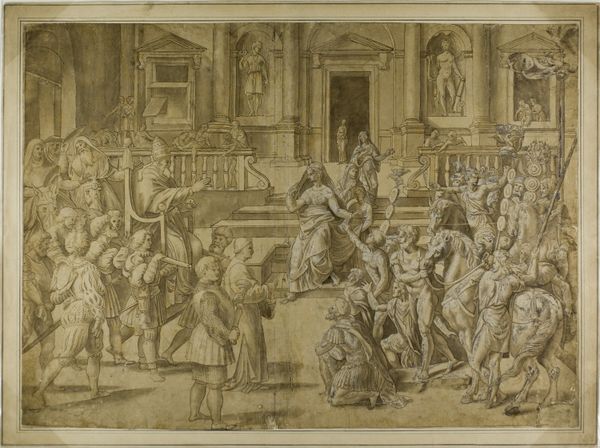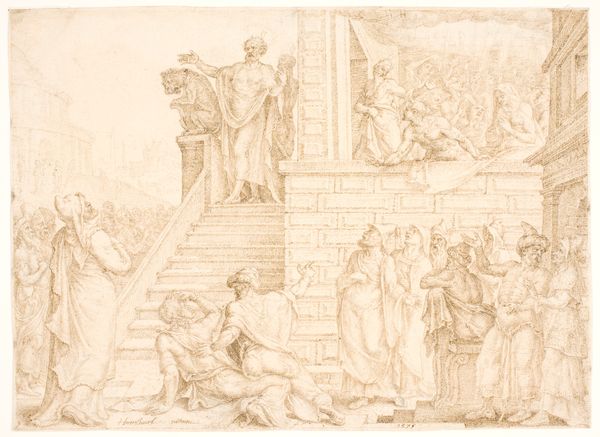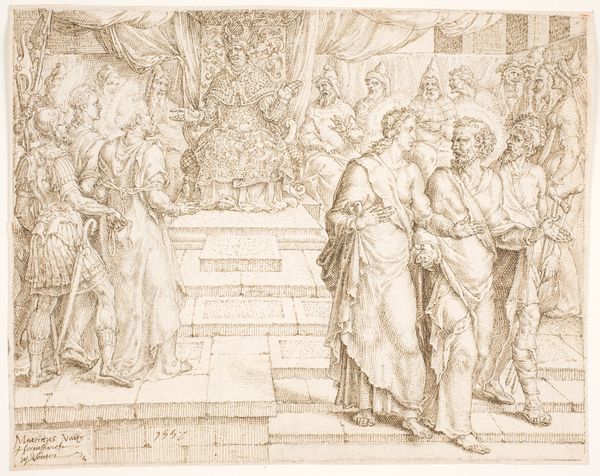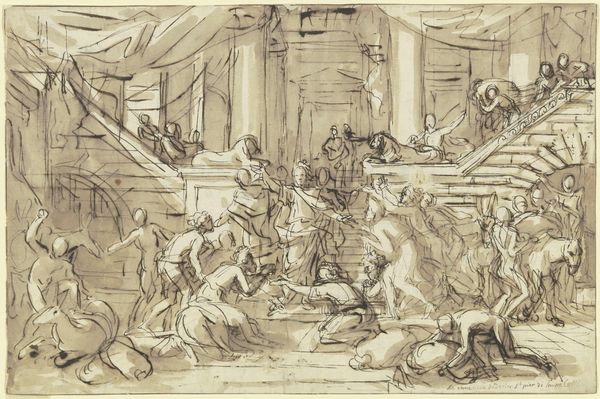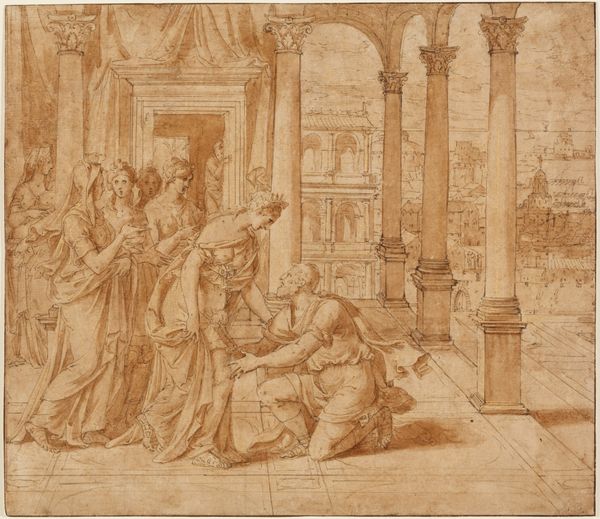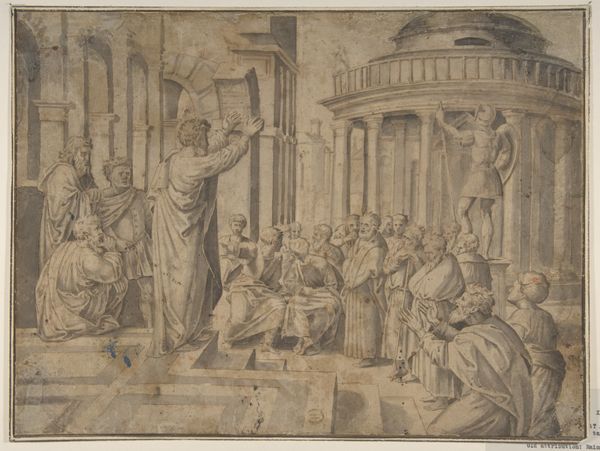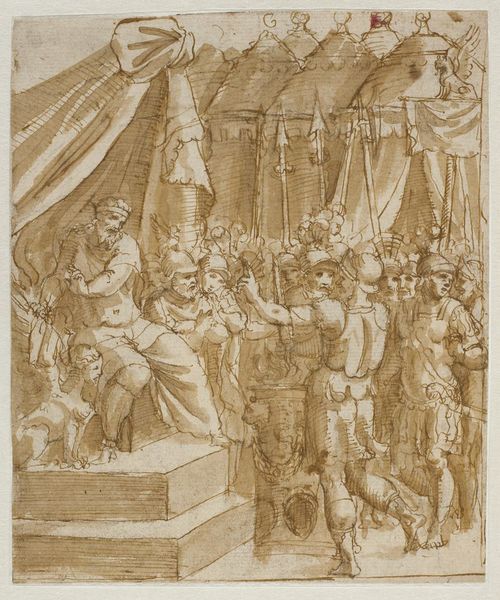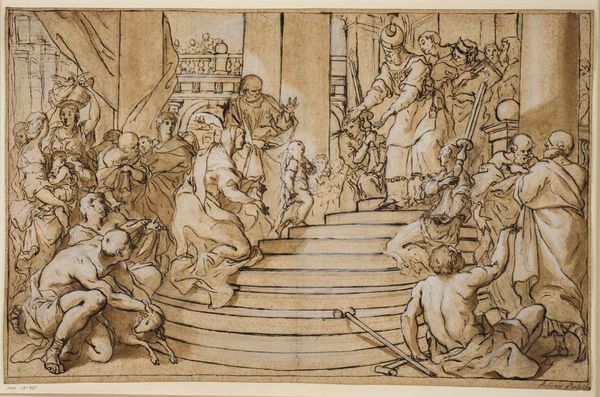
drawing, paper, ink, charcoal
#
drawing
#
toned paper
#
allegory
#
pencil sketch
#
holy-places
#
perspective
#
charcoal drawing
#
figuration
#
paper
#
ink
#
charcoal
#
history-painting
#
academic-art
#
italian-renaissance
Copyright: Public domain
Curator: Francesco Salviati, also known as Cecchino, rendered this work in 1553. It's titled "Allegory in Honor of Ranuccio Farnese." It's created with ink and charcoal on toned paper. Editor: It evokes a sense of classical grandeur. The use of monochrome wash creates a timeless quality, but it’s also quite imposing. What is your first impression? Curator: It speaks volumes about power, doesn't it? Look at the staged elevation, the bodies sprawling and supplicating. I find myself considering the Farnese family's role in Renaissance power dynamics. Their ability to commission such allegories becomes a central question—who has the voice, who dictates history? Editor: The architectural framework dominates. We see the columns, the arches, and statues, clearly evoking the Roman Empire's symbolic strength. And what do you make of the figure kneeling before what appears to be a Papal figure? Curator: Likely a portrayal of fealty and service. Consider how the bodies below are rendered in such a way that all lines of perspective converge toward the figure enthroned. The very composition dictates the social hierarchy. Editor: Those huddled masses, their gestures, the specific textures imparted through the wash and ink—they speak of both reverence and a kind of burdened desperation. What stories are embedded within this carefully constructed tableau? It feels as though even in rendering homage to Farnese, undercurrents of suffering surface. Curator: Absolutely. There is tension in how academic artistic tradition is being used here to uphold a social structure. We could explore this in relation to Gramsci's ideas on hegemony, about power being expressed not just through force, but through cultural norms. The allegory thus is a method of asserting dominance. Editor: So while ostensibly celebratory, it offers an entry point to discussions about class, power, and the ways visual culture can both reflect and shape perceptions? Curator: Precisely. It encourages us to dissect how power is constructed and maintained. It uses its references, its iconology, to remind its contemporary viewers, as well as future generations, of the hierarchies in society. Editor: What I find compelling is how a piece designed for flattery can spark crucial discussions on those who were denied agency or representation. The layered imagery presents enduring symbolic values alongside an implied social critique, or at least space for questioning power. Curator: Yes, through such critical engagement, art like this pushes us to unpack complicated histories, revealing intricate details about what past eras have communicated.
Comments
No comments
Be the first to comment and join the conversation on the ultimate creative platform.
